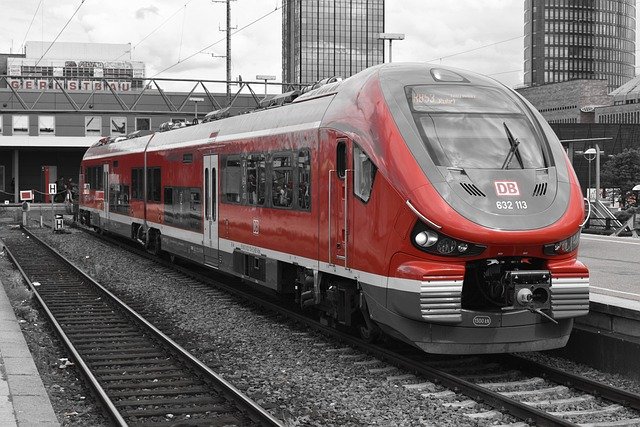Implementing dynamic pricing models that preserve customer trust
Dynamic pricing can improve revenue and resource allocation for mobility and logistics providers, but it risks eroding customer trust if implemented without transparency and safeguards. This article outlines practical approaches to align pricing models with demand, operations, and sustainability goals while maintaining fairness and compliance.

Dynamic pricing models tie fares or fees to real-time demand, inventory, and operational constraints. For organizations operating in urban mobility, multimodal networks, or freight logistics, implementing these models requires more than algorithms: it demands clear communication, data governance, and operational alignment. This overview focuses on practical design choices that balance pricing responsiveness with predictable and equitable customer experiences.
Pricing and demand dynamics
Effective pricing models begin with a clear definition of demand signals and pricing objectives. Analytics and telemetry feed real-time inputs—ride requests, booking velocity, freight tender volumes, or route congestion—that algorithms convert into price adjustments. Design decisions should set acceptable bounds (caps and floors), define surge triggers, and differentiate by service class rather than by individual customer whenever possible. These rules reduce perceptions of arbitrariness while still reacting to operational needs.
Mobility, multimodal routing, and analytics
When pricing spans multimodal journeys—bikes, buses, ride-hail, and shared scooters—routing and analytics become central to consistent customer experiences. Integrating routing data and modal availability helps ensure price changes reflect true service costs and time-to-destination differences. Analytics teams must monitor cross-modal substitution effects so adjustments on one mode do not unfairly push demand into another, undermining sustainability or capacity plans.
Transparency, compliance, and customer trust
Transparent communication is essential. Displaying the reason for a price change (high demand, limited vehicle availability, regulatory fees) and offering fare estimates or booking guarantees boosts perceived fairness. Compliance with local pricing regulations and anti-discrimination rules must be embedded in model logic and auditing processes. Regularly published summaries of how pricing works—without revealing proprietary algorithms—help maintain trust and support regulatory reviews.
Telemetry, maintenance, and operational inputs
Operational telemetry—vehicle location, driver hours, maintenance schedules, and fuel or energy levels—can meaningfully affect marginal costs and service reliability. Incorporating these inputs into pricing ensures that peak costs (for example, a shortage of available drivers due to maintenance cycles) are signaled to users while enabling operators to prioritize maintenance without hidden cross-subsidies. Accurate telemetry also supports post-event reconciliation and dispute resolution.
Sustainability, urban planning, and digitalization
Pricing can support sustainability goals when designed intentionally. Time-of-day incentives, congestion-sensitive fees, and discounts for low-emission vehicles or shared rides align pricing with urban planning objectives. Digitalization enables real-time coordination among operators and city systems, allowing pricing signals to reduce congestion and emissions while reflecting social equity considerations by protecting essential trips and vulnerable users.
Pricing tools and booking providers
Real-world implementation often pairs in-house strategies with third-party platforms for revenue management, booking, and telemetry. Costs depend on scale, feature sets, and integration complexity. Below are representative providers and typical cost estimations based on available market information and common deployment patterns.
| Product/Service | Provider | Cost Estimation |
|---|---|---|
| Revenue management and pricing engine (enterprise) | PROS | Enterprise licensing and services; typical annual costs often range from $50,000 to $400,000 depending on scope and custom models |
| Airline and travel revenue management | Amadeus | Enterprise deployment and transaction fees; common contracts range widely, often tens of thousands to several hundred thousand USD annually |
| Dynamic ride-hailing pricing (surge/prime time mechanisms) | Uber / Lyft | Variable fare multipliers applied to rides; customer-facing fares fluctuate in real time (multipliers commonly range from 1.2x to 3x during peaks) |
| Logistics pricing and freight matching platform | Transporeon | Subscription and usage fees for shippers/carriers; typical enterprise costs vary by modules and volume (estimates: $10,000+ annually) |
| Pricing optimization platform (cloud) | Pricefx | Software-as-a-Service licensing with implementations often ranging from $30,000 to $200,000+ per year depending on modules and users |
Prices, rates, or cost estimates mentioned in this article are based on the latest available information but may change over time. Independent research is advised before making financial decisions.
Conclusion Balancing dynamic pricing with trust requires a combination of technical controls, transparent communication, and policy guardrails. By basing adjustments on observable demand, telemetry, and operational constraints—and by exposing understandable explanations and caps—operators can achieve responsive pricing while preserving fairness, compliance, and long-term customer relationships.





